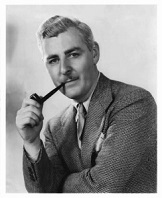
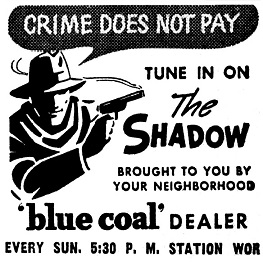 Who knows what evil lurks in the hearts of men?
Who knows what evil lurks in the hearts of men?
The Shadow knows!
The Shadow (1937-1954) aired “Death Stalks the Shadow” on October 9, 1938. Though only about 300 episodes are known to still exist out of over 800 (depending on how one counts), the number is subject to change as new episodes are unearthed from time to time. This is only the second episode we have featured since November of 2020 out of some three dozen overall, and I felt it was time for another, for The Shadow has proven quite popular with Golden Age radio fans, and especially fans of the Shadow in both radio and magazine formats.
The following is an abridged account of the character’s radio and magazine history for those coming to The Shadow for the first time. Long-time listeners may have forgotten some of the details, so if you are among them, refresh your memories or take a moment to grab your favorite beverage of choice before listening to this episode.
The history of the Shadow character is long and storied. A bare bones synopsis begins on July 3, 1930 when the narrator of magazine publisher Street & Smith’s radio version of its pulp magazine, Detective Story Magazine, was given the name of The Shadow. This mysterious voice who merely introduced and narrated the radio show, but was not a character in any of the episodes, became so popular after it was taken over by Frank Readick, Jr. and his spooky, phantom laugh that on April 1, 1931 The Shadow magazine was born. It ran for 325 issues, 282 of them written by Walter B. Gibson (1897-1985) under the house name of Maxwell Grant.
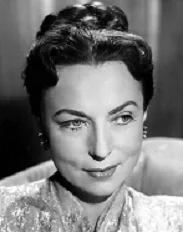 The Shadow debuted on radio on September 26, 1937 and delighted fans for more than seventeen years, closing shop on December 26, 1954. The radio show began its long run on the Mutual Broadcasting Network on Sunday evenings and was sponsored by Blue Coal. From its inception until just past its first year (Sept., 1937-Sept., 1938) the voice of the young 22-year-old Orson Welles (1915-1985) would be heard as that of the Shadow, and Agnes Moorehead (1900-1974, photo at left) would play the role of “the lovely Margot Lane,” his “faithful companion” and aide. Following Welles’s departure (“Professor X” was his final episode) Bill Johnstone became the Shadow for the September 25th, 1938 episode, at the beginning of Season Two. This week’s episode is but Johnstone’s third since assuming the role of the Shadow. Johnstone (1908-1996, photo top right) was then succeeded by Bret Morrison (1912-1978), who, in two stints (1943-44 & 1945-54), was radio’s the Shadow for ten of its seventeen years (though others besides these three mainstays would ascend to the role). Moorehead would also exit the show (in 1940) to follow Welles after he formed his Mercury Theater on the Air, as well as appear in several of the young genius’s classic films.
The Shadow debuted on radio on September 26, 1937 and delighted fans for more than seventeen years, closing shop on December 26, 1954. The radio show began its long run on the Mutual Broadcasting Network on Sunday evenings and was sponsored by Blue Coal. From its inception until just past its first year (Sept., 1937-Sept., 1938) the voice of the young 22-year-old Orson Welles (1915-1985) would be heard as that of the Shadow, and Agnes Moorehead (1900-1974, photo at left) would play the role of “the lovely Margot Lane,” his “faithful companion” and aide. Following Welles’s departure (“Professor X” was his final episode) Bill Johnstone became the Shadow for the September 25th, 1938 episode, at the beginning of Season Two. This week’s episode is but Johnstone’s third since assuming the role of the Shadow. Johnstone (1908-1996, photo top right) was then succeeded by Bret Morrison (1912-1978), who, in two stints (1943-44 & 1945-54), was radio’s the Shadow for ten of its seventeen years (though others besides these three mainstays would ascend to the role). Moorehead would also exit the show (in 1940) to follow Welles after he formed his Mercury Theater on the Air, as well as appear in several of the young genius’s classic films.
To arrest possible confusion arising from seeming inconsistencies between the print and radio versions of The Shadow it is important to note the following differences (though there are others):
The original print version of the Shadow portrayed him without any powers at all; he was a shadowy figure of the darkness, a cunning sleuth dedicated to overthrowing evil wherever he found it. It wasn’t until the radio version came along that he was imbued “with the power to cloud men’s minds” from a secret he learned in the Orient.
In The Shadow novels, Miss Lane’s first name was spelled Margo; for radio it was Margot.
In The Shadow novels, Margo Lane was not aware of the Shadow’s secret identity; for the radio scripts she was the only one who did know his secret identity.
In the magazine, the Shadow’s primary alter-ego was (eventually) revealed as that of Kent Allard; his radio alter-ego was Lamont Cranston.
This episode, “Death Stalks the Shadow,” begins with an inmate on death row. He acknowledges his guilt, and though soon to take that final lonely walk to the electric chair in the death house, he wants to clear his conscience at least a little bit by giving up the mastermind who orchestrated the crime for which he is now the only one taking the fall. A wrinkle involving the mastermind that I cannot reveal here leads the Shadow to a deadly trap from which he must use all his wits to survive. Listen now to this taut drama as the Shadow barely escapes death and defeats a cruel mastermind by evading a certain type of device described as a “ray.”
The weed of crime bears bitter fruit. Crime does not pay. –The Shadow
Play Time: 29. 35
{This exciting episode of The Shadow aired early on a Sunday evening in October of 1938.The following afternoon after school the neighborhood gang of future would-be crime fighters found themselves en masse at the corner newsstand primed and ready to read more adventures of crime fighters fighting the good fight against all forms of villainy. Black Mask (1920-51) was the premiere detective pulp of them all, having serialized the likes of Dashiell Hammett’s The Maltese Falcon years earlier. It was a monthly in 1938. The Phantom Detective (1933-53) was Standard Magazine’s direct response to Street & Smith’s The Shadow magazine. They must have hit the right note because it published for a successful 20 years. It was a monthly in 1938. The Shadow (1931-49) proved so wildly popular in numerous media (especially radio) that it benefited mightily with a built-in audience when it launched the magazine with the character’s name emblazoned across the top of the magazine. From mid-1932 through almost mid-1943 it held to an astonishing bi-weekly schedule, the magazine’s many young fans treated to two issues a month! The issue below shows the October 1, 1938 issue.}
[Left: Black Mask, Oct. 1938 – Center: The Phantom Detective, Oct. 1938 – Right: The Shadow, Oct. 1938]
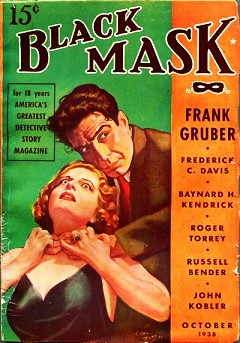
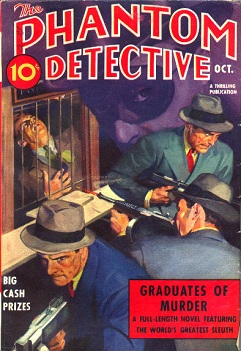
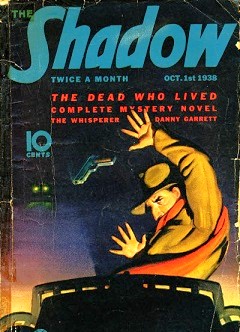
To view the entire list of weekly Old Time Radio episodes at Tangent Online, click here.